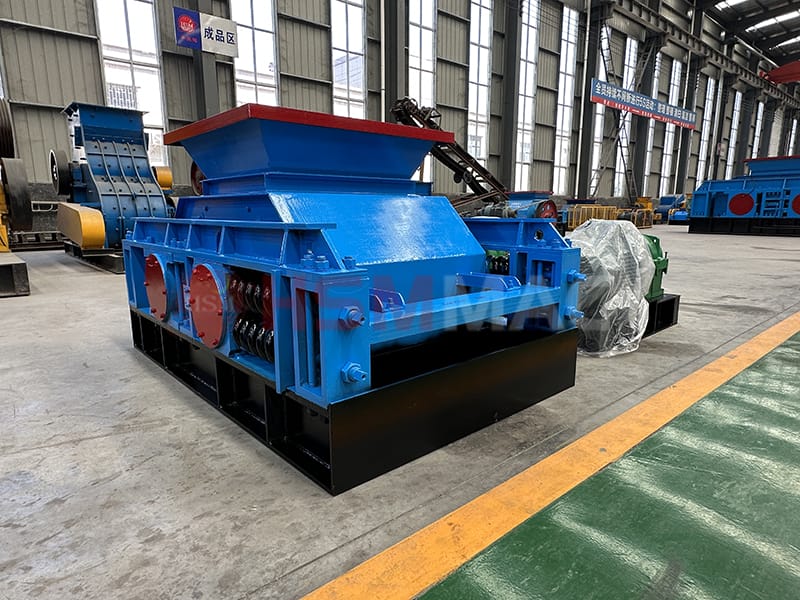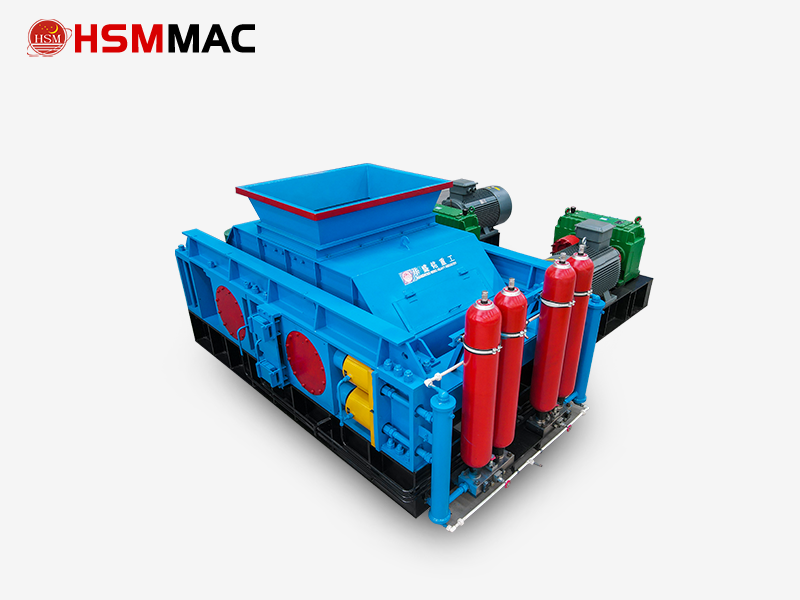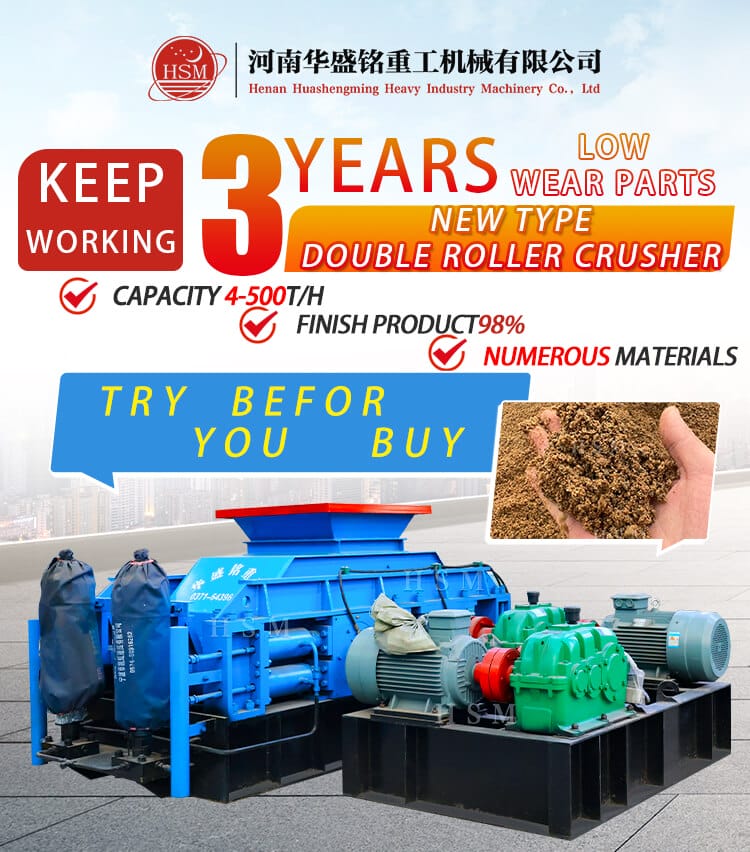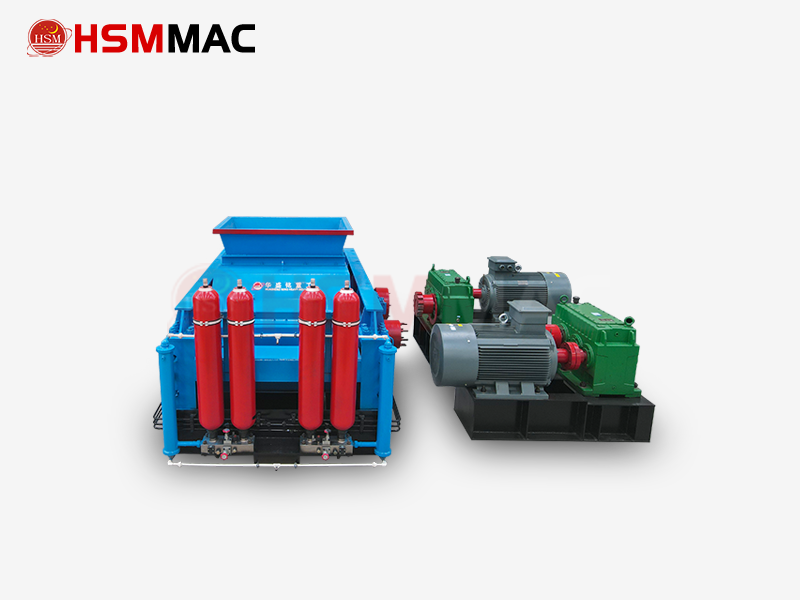In the field of salt mine crushing, double-roll crushers have become the ideal choice for medium and fine crushing due to their simple structure, easy maintenance, and uniform product particle size. The following sections provide an in-depth explanation of their working principles, applicability analysis, selection recommendations, and typical case studies:
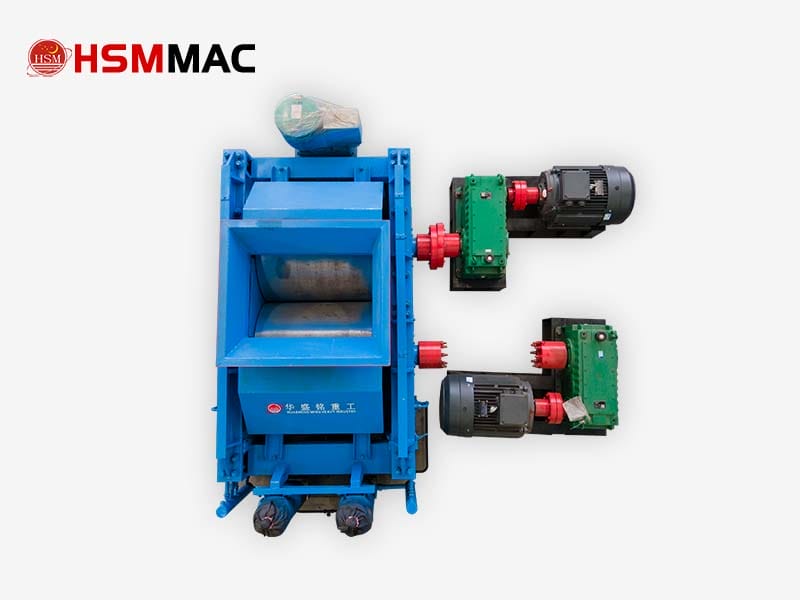
Double roller crusher
1. Double roller crusher The working principle and type of roller crusher
The roller crusher exerts compressive and shear forces on the material through the reverse rotation action of the rollers, making it particularly suitable for medium and low hardness materials (such as salt ore). According to the number and structure of rollers, they are mainly divided into the following types:
Double Roller Crusher:
Consists of two parallel rollers that control the discharge particle size by adjusting the roller clearance (typically 2-20 mm).
It is suitable for medium and fine crushing of salt mines, with a processing capacity of 5-100 tons per hour and a crushing ratio of 3:1 to 5:1.
Advantages: Simple structure, low energy consumption, low super-crushing rate, and equipped with hydraulic protection system to prevent damage to hard objects.
Four-roller crusher:
It adopts a four-stage roller series design (upper layer coarse crushing → lower layer fine crushing), with a crushing ratio of up to 18:1 and an output particle size adjustable to ≤3mm.
It is suitable for high-precision crushing requirements, such as fine crushing of salt ore to less than 2 mm (accounting for more than 80%).
Technical features: Hydraulic CNC roller gap adjustment, automatic dust removal system, wear-resistant alloy roller lining, can handle materials with compressive strength ≤ 240MPa.
High Pressure Roller Mill:
Layer crushing is achieved through 200MPa high pressure, saving 10-30% energy, and is suitable for large-scale salt ore crushing.
Microcracks are generated, which improves the efficiency of subsequent processing, but the investment cost is high.
2. Special requirements for salt ore crushing of double roller crusher and applicability of roller crusher
Salt ore has characteristics such as low to medium hardness (3-4 on the Mohs scale), corrosion resistance, and components that may contain moisture. Roller crushers are designed to specifically address the following issues:
Corrosion resistance:
The corrosive nature of salt mines requires equipment materials to have corrosion resistance. The rollers of roller crushers can be made of high chromium alloys or wear-resistant liners (e.g. AM740R models) for longer service life.
Anti-clogging design:
If the salt ore has high water content, it is easy to stick. Double or four-roll crushers are equipped with automatic scrapers and screenless structures (such as double-stage crushers) to prevent clogging caused by wet and viscous materials.
Particle size control:
Salt mineral products often require fine crushing to less than 3 mm (e.g., for chemical feedstocks). Four-roller crushers achieve precise particle size control through multi-stage crushing.
3. Double roller crusher selects the key parameters of the roller crusher
| parameter | Double roller type | Four-roller type | High pressure roller mill |
| Broken ratio | 3:1~5:1 | ≤18:1 | High (laminated crushing) |
| Output particle size | 2-20mm (adjustable) | ≤3mm (controllable ends) | ≤ 5 mm |
| Processing power | 5-100 tons/hour | 30-100 t/h (e.g. 4PG1212) | 60-90 tons/hour |
| Applicable scenarios | Medium fine crushed, medium scale | High-precision fine crushing and large-scale production | Large mines, energy-saving requirements |
| Corrosion-resistant design | Optional wear-resistant liners | Alloy roller skin + dust removal system | High alloy material |
4. Double roller crusher Selection Considerations
Material Characteristics Matching:
If the salt mine contains clay or moisture content >15%, select a model without a screen bottom and with a scraping plate (e.g., a two-stage crusher).
For harder salt mines (e.g., containing impurities), it is recommended to use a four-roll crusher or a high-pressure roller mill.
Production Capacity and Power Consumption Balance:
For production rates below 50 tonnes per hour: Double roll crusher (e.g., AM740R, power consumption 8 kW);
50–100 tonnes per hour: Four-roll crusher (e.g., 4PG1212, output 70 t/h);
Large-scale production: High-pressure roller mill (30% energy savings, but higher initial investment).
Maintenance and Costs:
Double-roll structure is simple with low maintenance costs; four-roll requires regular inspection of the hydraulic system and roller wear.
It is recommended to choose modular design models (such as the AM740R with a removable frame) for easy cleaning and component replacement.
5. Double roller crusher Typical case references
Two-stage screenless crusher (two-roll type): Used for fine crushing of salt mines, with an hourly output of 50 tonnes, output particle size ≤3 mm (85% below 2 mm), and a clog-free design suitable for high-humidity salt mines.
Four-roll crusher 4PG1212: Processes coke, salt mines, etc., with feed size ≤25mm, output size ≤3mm, production capacity of 70t/h, equipped with hydraulic adjustment and dust collection systems.
High-pressure roller mill in salt chemical applications: A project replaced traditional crushing with a high-pressure roller mill, reducing energy consumption by 25% and improving the compliance rate of fine crushing particle size to 95%.
Double roll crusher Summary
Roll crushers offer significant advantages in salt mine crushing: double-roll crushers are suitable for medium to small-scale operations with moderate crushing ratios; four-roll crushers meet requirements for high-precision fine crushing and low over-crushing rates; high-pressure roller mills are ideal for large-scale energy-efficient production lines. When selecting equipment, consider salt mine characteristics (hardness, moisture content), production capacity targets, and maintenance costs, prioritising corrosion-resistant designs and clog-resistant models.












